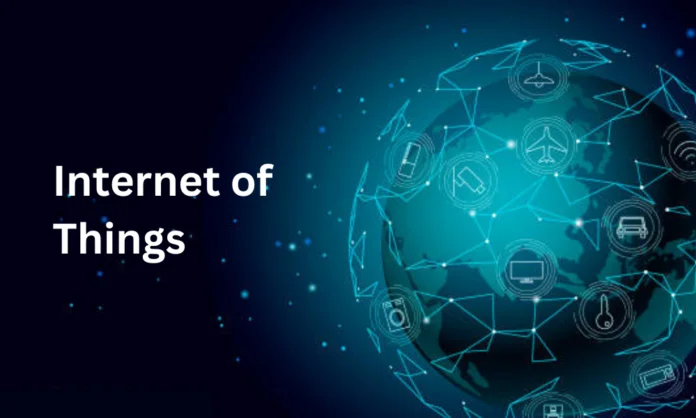In the tech-driven 21st century, many mechanisms have left their mark across domains; the Internet of Things is one of them. This technology has made the communication between humans and machines more interactive. IoT depends on high connectivity spectrums to receive and share data while solving a query.
Sources depict that in the last financial year of 2023, global investments in IoT reached $1.1 trillion. Currently, over 14 billion IoT devices are successfully operating around the planet, and this number is about to increase to 25.44 billion by 2030. Hence, there will be a plethora of opportunities for IoT growth in the upcoming days.
Nevertheless, there are also significant challenges to address while making technological advancements. This blog will highlight the future opportunities and challenges of the Internet of Things. Firstly, let us discuss the subject profoundly.
What is the Internet of Things?
The Internet of Things refers to a technology that enables objects, machines, and devices to receive and share data, equipping them with relevant software, processors, sensors, and others. It is a data-driven mechanism that processes larger amounts of insights to offer solutions.
Healthcare, manufacturing, agriculture, hospitality, retail, construction, etc., are among the industries that have highly adopted IoT. Moreover, this technology has significantly contributed to designing and executing smart home and smart city initiatives. In short, IoT is the key to smart living.
Internet of Things: Future Opportunities
Market growth:
The IoT industry is growing remarkably, accomplishing a market size of $714.48 billion in 2024. Experts anticipate that the IoT sector has an opportunity and probability of reaching a whopping $4062.34 by 2032 with a CAGR of 24.3% within the forecast period. The incorporation of generative AI will be significant for this remarkable progression of the IoT industry.
Alongside AI, high-speed networks have also contributed to the growing market of the Internet of Things. The introduction of 5G networks allowed people and organizations to utilize technologies like IoT effectively. It enabled devices and software to limit latency while receiving and sharing a large amount of data.
Enhanced adoption:
There is a high possibility of IoT integrations in diverse industries and setups in the approaching years. Many developed and developing countries are aiming to construct smart cities, where IoT will be an inseparable element. Furthermore, household, hospitality, and wearable devices have significantly incorporated this mechanism.
IoT is a growing technology that is gradually boosting its competency. It is playing a crucial role in developing methods of smart energy and agriculture. Additionally, the technology can be useful for environmental monitoring.
Multiple technology integrations:
With the latest technology integrations, the Internet of Things continuously enhances efficiency. In the upcoming years, additional technology adoption will be enhanced in IoT. Blockchain is one such mechanism that can observe full integration with IoT devices for security purposes.
Emergence of multi-purpose devices:
The Internet of Things has given the emergence of the idea of multi-purpose software and devices, where a single gadget can fulfill multiple tasks efficiently. Such devices will be beneficial for commercial and household purposes.
IoT technology depends on deep learning framework where software processes large amounts of data to offer solutions. Future IoT devices will bear the capabilities to understand and fix multiple challenges at a time.
Future Challenges of IoT:
Below are the top challenges of IoT that will prevail in the future days if not addressed appropriately:
Privacy and security: IoT devices and gadgets store and process larger datasets, including people’s personal and professional lives. Therefore, in case of system or network vulnerability, privacy and security concerns emerge.
In such situations, cybercriminals can hack devices, steal user data, and misuse it for personal benefit. Vulnerability can occur due to poor encryption process, inefficient testing and upgrading, IoT malware and ransomware, etc.
Cost and energy efficiency: Cost and energy consumption are two significant concerns of IoT implementation. Such devices include advanced and the latest technologies, which are often costly. Moreover, thousands of such gadgets consume a lot of energy while connecting to IoT networks, which is a direct threat to sustainable practices. These challenges can create difficulty for the growth of IoT implementation.
Compatibility standards: The Internet of Things depends on other technologies, such as high-speed networks, cloud servers, etc. So, with every IoT advancement, each connected mechanism also needs upgrades to limit latency and provide standard services. Here, the compatibility issue comes into the picture, which can create challenges in the approaching years.
Wrapping up!
Doubtlessly, we are heading toward a technological tomorrow with connected devices, top-notch machinery services, and AI-driven solutions to tackle challenges. However, no road is easier to cross while aiming for progression. Similarly, the Internet of Things also bears certain future opportunities as well as challenges. Addressing these challenges will untie further opportunities for this technology. Follow our blog updates to attain knowledge on the latest innovations and technologies.
Recommended For You:

